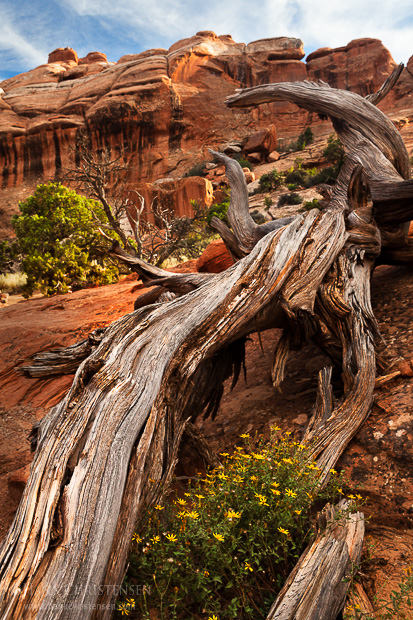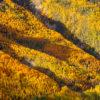
Like many of the most visited national parks, Arches in Moab, Utah offers the visitor many spectacular natural wonders. But for the photographer, these more popular parks can be a real challenge – how do you find originality in a place that has been covered with a camera so thoroughly? I found this especially true when I visited Arches this past September. It was true that everywhere I turned I saw famous arches, but that was just the problem – they were all famous. Sure, I still set about capturing them for myself, but looking back, are any of these photos of which I’m really proud? How does this differentiate my portfolio from any of the thousands of talented photographers that visit every year?
Another challenge of this park is that in many areas, visitors are restricted to established trails. While I can certainly appreciate the reasons (the main one being the fragile biological soil crust supporting life throughout the desert), it is not my idea of freedom of exploration with a camera!
I thought about these challenges as I explored the park in 90+ degree heat. The last time I was here there was a fresh blanket of snow on the ground, so the dry desert look was bumming me out a little. I had already taken a midday hike out to Delicate Arch (purposefully leaving all my heavy camera gear back at the car), and I was getting impatient for sunset, even though I had not yet scouted an acceptable location. Finally, I saw something of interest just off trail, and it wasn’t surrounded by twenty photographers! An old twisted log created some interested shapes, and had the bonus of wildflowers growing at its base. And you know what? Not a single arch in sight! Oh well, just because I’m in a place famous for arches doesn’t mean all my shot HAVE to include arches.
I set about creating a composition that I liked. This process is usually a mixture of pre-visualization and experimentation. I knew I wanted to get in relatively close to the flowers and the log, and I wanted something fairly wide to include the cliff beyond. Probably no wider than 24mm, so I attached my 24-70 and got my tripod legs low and splayed out. Slowly I worked the camera and tripod in and out of the scene, watching the edges of my composition, and adjusting the tripod legs as necessary. When working in this way in a busy location, don’t worry about others stopping behind you to watch what you’re doing, and sometimes wondering what it is you are taking a picture of (rest assured, this WILL happen).
After about 10 minutes, I had my shot in the bag and was ready to move on. While certainly not a portfolio quality shot, I was happy to have found something that allowed me to express my creativity, and come away with something that wasn’t also on hundreds of other photographers’ memory cards that day.

